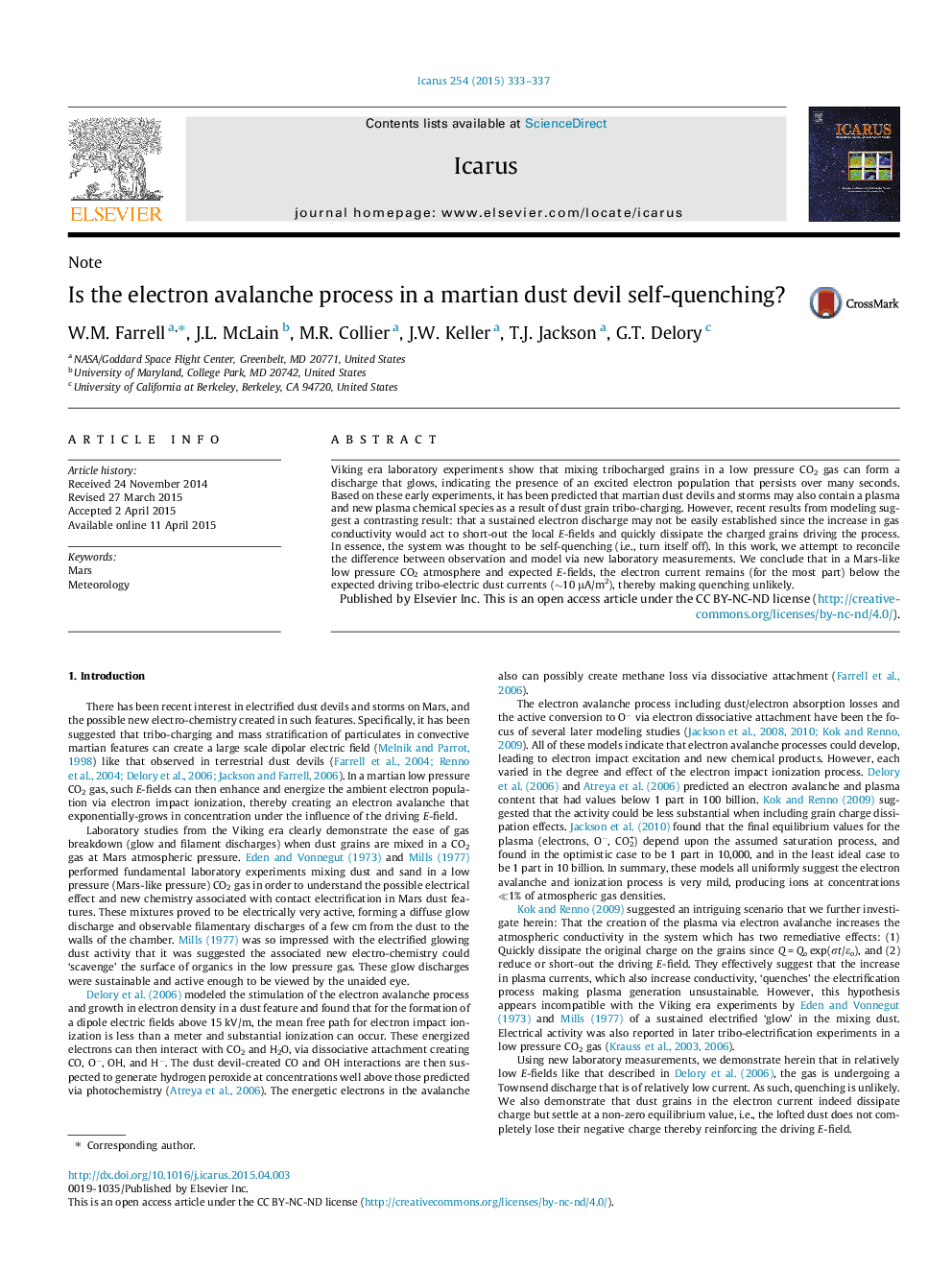| Article ID | Journal | Published Year | Pages | File Type |
|---|---|---|---|---|
| 8136373 | Icarus | 2015 | 5 Pages |
Abstract
Viking era laboratory experiments show that mixing tribocharged grains in a low pressure CO2 gas can form a discharge that glows, indicating the presence of an excited electron population that persists over many seconds. Based on these early experiments, it has been predicted that martian dust devils and storms may also contain a plasma and new plasma chemical species as a result of dust grain tribo-charging. However, recent results from modeling suggest a contrasting result: that a sustained electron discharge may not be easily established since the increase in gas conductivity would act to short-out the local E-fields and quickly dissipate the charged grains driving the process. In essence, the system was thought to be self-quenching (i.e., turn itself off). In this work, we attempt to reconcile the difference between observation and model via new laboratory measurements. We conclude that in a Mars-like low pressure CO2 atmosphere and expected E-fields, the electron current remains (for the most part) below the expected driving tribo-electric dust currents (â¼10 μA/m2), thereby making quenching unlikely.
Keywords
Related Topics
Physical Sciences and Engineering
Earth and Planetary Sciences
Space and Planetary Science
Authors
W.M. Farrell, J.L. McLain, M.R. Collier, J.W. Keller, T.J. Jackson, G.T. Delory,
